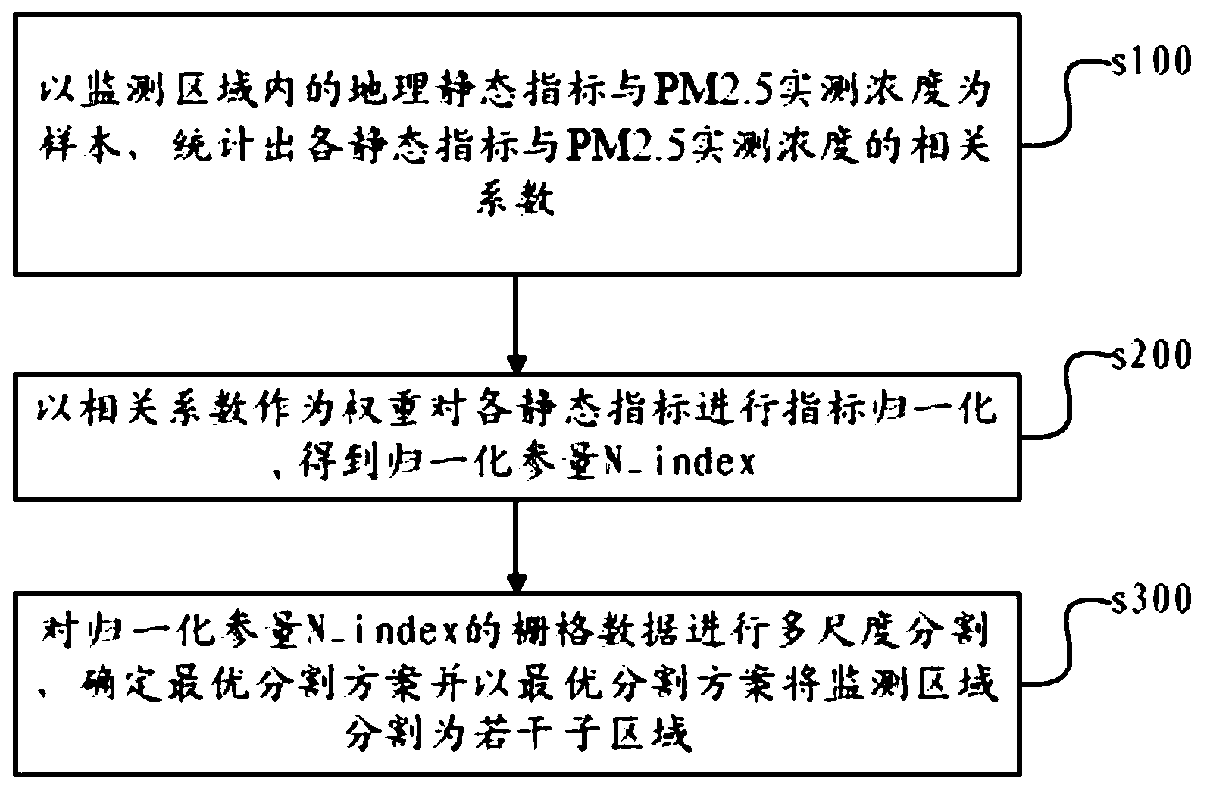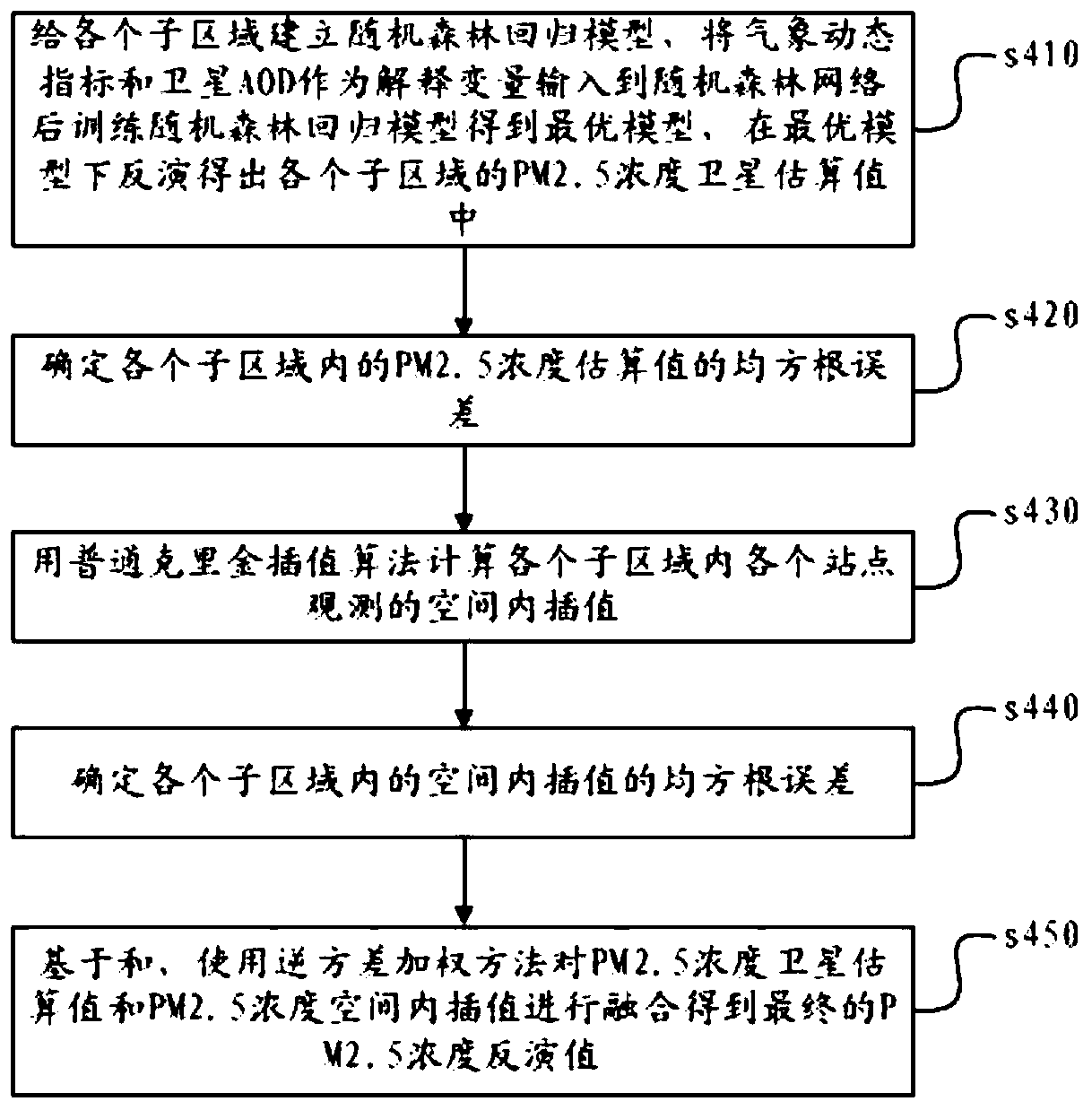PM2. 5 inversion method and monitoring region segmentation method
A monitoring area and inversion technology, applied in measurement devices, particle suspension analysis, suspension and porous material analysis, etc., can solve the problems of low AOD inversion accuracy, increase satellite AOD missing rate, etc., and achieve seamless high-precision calculation , reduce interference and ensure stability
- Summary
- Abstract
- Description
- Claims
- Application Information
AI Technical Summary
Problems solved by technology
Method used
Image
Examples
Embodiment 2
[0072] The PM2.5 inversion method that embodiment two provides, on the basis of the monitoring area segmentation method of embodiment one, the monitoring area is divided into several sub-areas, and then carry out PM2.5 inversion according to the following steps:
[0073] s410. Establish a random forest regression model for each sub-region, input the meteorological dynamic index and satellite AOD as explanatory variables into the random forest network, train the random forest regression model to obtain the optimal model, and invert each sub-region under the optimal model Satellite estimates of PM2.5 concentrations for In , the meteorological dynamic indicators may be, for example, surface temperature, surface pressure, wind speed, relative humidity, and boundary layer height.
[0074] AOD is the aerosol optical depth, which is the integral of the aerosol extinction coefficient in the vertical direction. It is a physical quantity that quantitatively describes the reduction effe...
Embodiment 3
[0085] On the basis of Embodiment 2, the following steps are also included before step 440. Before the above-mentioned step s460, the following steps are also included:
[0086] s460. Establish satellite estimates of PM2.5 concentrations and spatial interpolation The fitting function of .
[0087] According to the fitting function, the corresponding station data of the PM2.5 concentration estimation value of the missing corresponding ground station data are obtained.
[0088] Satellite observations have missing data, while spatial interpolation Due to the sparse and uneven distribution of stations, the interpolation accuracy also varies in space. Combining the results of the two can not only reduce the error to a certain extent, but also increase the spatial coverage of the inversion results. The specific execution process is divided into two steps. Firstly, the fitting function between the two is established, and there is a spatial interpolation function for no satellit...
PUM
 Login to View More
Login to View More Abstract
Description
Claims
Application Information
 Login to View More
Login to View More - R&D
- Intellectual Property
- Life Sciences
- Materials
- Tech Scout
- Unparalleled Data Quality
- Higher Quality Content
- 60% Fewer Hallucinations
Browse by: Latest US Patents, China's latest patents, Technical Efficacy Thesaurus, Application Domain, Technology Topic, Popular Technical Reports.
© 2025 PatSnap. All rights reserved.Legal|Privacy policy|Modern Slavery Act Transparency Statement|Sitemap|About US| Contact US: help@patsnap.com



